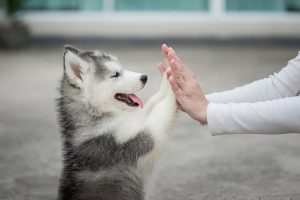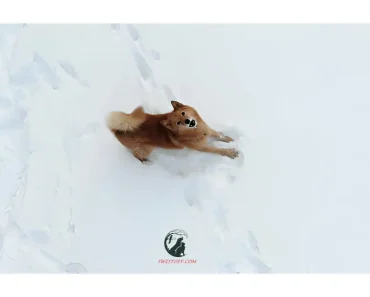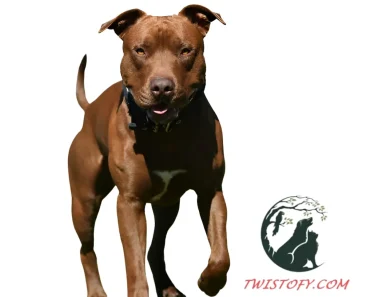Dogs are incredibly communicative animals, often using their bodies to convey a range of emotions and intentions. Understanding a dog body language can help improve your relationship with your pet, enhance training efforts, and ensure the safety of both the dog and those around it. Here’s a guide to interpreting the signals your dog might be sending through their dog body language.

Dog body language, Dog body language
1. Tail Position and Movement Dog body language
dog’s tail position and movement is crucial for interpreting its emotions and intentions. Here is a breakdown of what various tail positions and movements typically signify:
Tail Positions
- Neutral Position: A tail that is held in a natural position, neither high nor low, typically indicates that the dog is relaxed and comfortable.
- High Tail: When a dog’s tail is held high, it usually signifies alertness or confidence. If the tail is also stiff, it could indicate aggression or dominance.
- Low Tail: A tail that is held low or tucked between the legs often signifies fear, submission, or anxiety. Dogs may tuck their tails to make themselves appear smaller and less threatening.
- Horizontal Tail: A tail held straight out horizontally can indicate that the dog is focusing on something. The dog is likely in an alert state, assessing
its surroundings or preparing to react to a stimulus.
Tail Movements
- Wagging Tail: This is often interpreted as a sign of happiness, but context matters:
- Fast Wagging: Generally indicates excitement or happiness. If the whole body wags with the tail, it’s a clear sign of friendliness and joy.
- Slow Wagging: Can indicate that the dog is unsure or tentatively friendly. It might be gauging the situation before reacting more enthusiastically.
- Broad Wagging: If the tail is wagging broadly and enthusiastically, it typically means the dog is very happy and friendly.
- Tight, High Wagging: If the tail is held high and wagging rapidly in a tight motion, it could indicate agitation or potential aggression.
- Stiff Tail: A stiff tail, especially if held high, can indicate a dog is on high alert and may be feeling aggressive or threatened. This is often seen in dogs that are preparing to defend themselves or their territory.
- Tucked Tail: A tail that is tucked tightly between the legs is a clear sign of fear, anxiety, or submission. This is common in situations where a dog feels threatened or overwhelmed.
- Circular Wagging: Sometimes called a “helicopter tail,” this movement, where the tail spins in a circular motion, is a strong indicator of extreme happiness and excitement, often seen when a dog greets a beloved person.
Contextual Considerations
- Breed Differences: Different breeds have natural variations in how they hold and move their tails. For example, some breeds have naturally curly tails that may not give the same signals as straight tails. Understanding breed-specific characteristics is important for accurate interpretation.
- Body Language: Always consider tail signals in conjunction with other body language cues, such as ear position, facial expressions, and overall posture. For example, a wagging tail combined with a stiff body and bared teeth would indicate a very different emotional state than a wagging tail with a relaxed body and soft eyes.
- Situational Context: The situation and environment also play critical roles. A tail movement in a familiar, safe environment can have a different meaning than the same movement in an unfamiliar or stressful situation.
2. Ear Position
dog’s ear position is another key aspect of interpreting their emotions and intentions. Here is a detailed breakdown of what different ear positions typically signify:
Ear Positions
- Neutral Ears: When a dog’s ears are in their natural, relaxed position, it usually indicates that the dog is calm and content. The exact neutral position varies by breed; for example, a German Shepherd’s natural ear position is erect, while a Basset Hound’s ears naturally hang down.
- Forward Ears: Ears that are perked up and facing forward indicate that the dog is attentive and focused on something. This can signal curiosity, interest, or alertness. The dog is likely assessing a situation, person, or object.
- Backward Ears: Ears that are pulled back against the head can signify different emotions depending on the context:
- Slightly Backward: Ears held slightly back can indicate that the dog is feeling friendly, submissive, or unsure. This is often seen when a dog is meeting new people or dogs and is feeling cautious but not necessarily threatened.
- Flattened Backward: Ears flattened tightly against the head are a sign of fear, anxiety, or submission. This position is often accompanied by other signs of stress, such as a tucked tail, cowering posture, or wide eyes.
- One Ear Up, One Ear Down: This often signifies that the dog is unsure or confused. It can also indicate that the dog is trying to listen to multiple things at once or is curious about a sound but is still trying to figure out what it is.
Contextual Considerations

Dog body language, Dog body language
- Breed Differences: Different breeds have unique ear shapes and positions that can influence their expressiveness. For example, breeds with floppy ears, like Beagles, might have less dramatic ear movements compared to breeds with erect ears, like Huskies. Understanding these breed-specific traits is essential for accurate interpretation.
- Body Language: Ear positions should be read in conjunction with other body language cues. For instance, forward ears combined with a relaxed body and a wagging tail usually indicate interest and friendliness, while forward ears with a stiff body and focused stare could signal potential aggression or a high level of alertness.
- Situational Context: The environment and specific situation also play crucial roles. Ears pinned back in a familiar setting may indicate a dog is feeling submissive or scared, while the same ear position in a vet’s office could indicate anxiety or fear of the unfamiliar environment.
3. Eye Behavior
dog’s eye behavior is crucial for interpreting their emotions and intentions. Here’s an in-depth look at what different eye behaviors typically signify:
Eye Behaviors
- Soft Eyes: When a dog’s eyes are relaxed and appear soft, it generally indicates that the dog is calm, content, and at ease. This is often seen in a relaxed home environment or when the dog is being petted and is comfortable.
- Hard Eyes: When a dog’s eyes appear hard or intense, it often signifies stress, discomfort, or aggression. The dog may be feeling threatened or trying to assert dominance. Hard eyes are usually accompanied by other signs of tension, such as a stiff body and raised hackles.
- Direct Stare: A direct, sustained stare can be a sign of dominance or a challenge, especially if accompanied by other aggressive body language. However, in a friendly context, such as between a dog and its owner, it can also be a sign of affection or seeking attention.
- Avoiding Eye Contact: When a dog avoids eye contact, it typically signifies submission, fear, or discomfort. This behavior is common in dogs that are feeling threatened or anxious, and it’s a way for them to show that they are not a threat.
- Whale Eye: This term describes when a dog shows the whites of its eyes, often due to fear, anxiety, or stress. The dog might be feeling threatened or overwhelmed. Whale eye is a strong indicator that the dog is uncomfortable with the current situation.
- Blinking and Squinting: Frequent blinking or squinting can indicate that the dog is feeling relaxed and comfortable. It can also be a way for dogs to signal to each other or humans that they are not a threat and are feeling friendly.
- Dilated Pupils: Pupils that are dilated can signify arousal, excitement, fear, or stress. The specific emotion depends on the context and accompanying body language. In a playful situation, dilated pupils indicate excitement, while in a stressful situation, they indicate fear or anxiety.
Contextual Considerations
- Breed Differences: Some breeds have eye shapes and colors that might make it more challenging to read their emotions. For example, breeds with darker eye rims or smaller eyes might not show the whites of their eyes as prominently as other breeds.
- Body Language: Eye behavior should be read in conjunction with other body language cues for accurate interpretation. For instance, direct eye contact with a wagging tail and relaxed body likely means the dog is seeking attention, while direct eye contact with a stiff body and raised hackles can indicate aggression.
- Situational Context: The environment and specific situation heavily influence eye behavior. A dog that avoids eye contact at the vet’s office may be feeling scared or anxious, while the same behavior at home could indicate submission.
4. Mouth and Facial Expressions
dog’s mouth and facial expressions is crucial for interpreting their emotions and intentions. Here is a detailed look at what different mouth positions and facial expressions typically signify:
Mouth and Facial Expressions
- Relaxed Mouth:
- Slightly Open Mouth: A dog with a slightly open mouth, often accompanied by a gentle pant, typically indicates that the dog is relaxed and comfortable. This is common when dogs are resting or in a familiar, stress-free environment.
- Closed Mouth: When a dog’s mouth is closed but relaxed, it also suggests contentment and calmness.
- Panting:
- Normal Panting: Dogs pant to regulate their body temperature. Normal panting with a relaxed body indicates that the dog is warm or has been exercising.
- Excessive Panting: If the panting is rapid and excessive, it can be a sign of stress, anxiety, or fear. This is often seen during stressful situations like thunderstorms, vet visits, or car rides.
- Yawning:
- Relaxed Yawning: A dog yawning in a relaxed setting can simply be tired or bored.
- Stress Yawning: If yawning occurs frequently in a situation where the dog might be uncomfortable, it can be a sign of stress or anxiety.
- Licking Lips:
- Normal Lip Licking: Dogs often lick their lips after eating or when they are anticipating food.
- Stress Lip Licking: Frequent lip licking in the absence of food can be a sign of nervousness, stress, or submission.
- Teeth Display:
- Relaxed Grin: Some dogs show their front teeth in a relaxed “grin” when they are happy and comfortable, often accompanied by a wagging tail and relaxed body.
- Aggressive Snarl: A dog showing its teeth with lips pulled back, especially if accompanied by a growl, stiff body, and direct stare, is a clear sign of aggression or defensive behavior.
- Whisker Movement:
- Relaxed Whiskers: Whiskers in a natural, relaxed position indicate that the dog is calm.
- Forward Whiskers: Whiskers pushed forward can indicate that the dog is focusing intently on something, showing interest or alertness. In an aggressive context, it might also accompany other signs of aggression.
- Wrinkled Muzzle:
- Aggressive Wrinkling: A wrinkled muzzle, often seen with bared teeth and growling, indicates aggression or defensive behavior.
- Playful Wrinkling: Dogs can also wrinkle their muzzles in play, usually accompanied by a wagging tail and playful body posture.
Contextual Considerations

Dog body language, Dog body language
- Breed Differences: Different breeds have different facial structures, which can affect how they display certain expressions. For example, brachycephalic breeds (like Bulldogs and Pugs) might show different stress signals than breeds with longer snouts.
- Body Language: Mouth and facial expressions should be interpreted in conjunction with other body language cues for an accurate understanding of the dog’s emotional state. For example, a relaxed mouth with a stiff body might indicate mixed emotions or that the dog is trying to calm itself.
- Situational Context: The environment and specific situation also heavily influence mouth and facial expressions. A dog showing its teeth at home might be playfully interacting with a favorite toy, while the same behavior in a new, unfamiliar environment could indicate stress or aggression.Dog body language
5. Body Posture
dog’s body posture is crucial for interpreting their emotions and intentions. Here is an in-depth look at what different body postures typically signify:
Body Postures
- Relaxed Posture:
- Neutral Stance: When a dog stands or sits with a relaxed, loose body, it indicates that the dog is comfortable and at ease. The dog’s weight is evenly distributed, and there are no signs of tension.
- Lying Down: A dog lying down with an exposed belly or lying on its side signifies trust and relaxation. This posture shows the dog feels safe in its environment.
- Alert Posture:
- Forward Lean: When a dog leans forward with its weight shifted onto its front legs, it is focused and alert. The dog may be curious about something or assessing a situation.
- Stiff Body: A stiff, upright body posture with ears forward and tail up indicates that the dog is on high alert and may be preparing to react to a perceived threat or interesting stimulus.
- Dominant or Aggressive Posture:
- Erect and Stiff: A dog standing tall with a stiff, upright body, tail held high, and possibly hackles raised, shows dominance or aggression. The dog may be trying to assert itself or warn off a perceived threat.
- Puffing Up: Some dogs may try to appear larger by puffing up their fur and standing with legs apart. This is a classic sign of trying to intimidate or appear dominant.
- Submissive Posture:
- Crouching: A dog that crouches down, lowers its body, or flattens itself to the ground is showing submission. This posture is often accompanied by a tucked tail, flattened ears, and avoiding eye contact.
- Rolling Over: Rolling onto the back and exposing the belly can be a sign of extreme submission. The dog is showing that it is not a threat and is deferring to the other individual.
- Fearful Posture:
- Cowering: A cowering dog will lower its body, tuck its tail tightly between its legs, and may tremble. This posture indicates fear and anxiety.
- Hiding: Dogs may seek to hide behind objects or people when they are scared. This is a clear signal that the dog is uncomfortable and trying to protect itself.
- Playful Posture:
- Play Bow: A classic play bow, where the dog lowers its front end while keeping its rear end up and wagging its tail, indicates a desire to play. This is often accompanied by a wagging tail and relaxed, happy facial expressions.
- Bouncing: Playful dogs might bounce around, shifting their weight back and forth, and displaying exaggerated, loose movements. This indicates excitement and a readiness to engage in play.
Contextual Considerations
- Breed Differences: Some breeds have distinctive body postures and movements. For example, breeds like the Greyhound have a naturally more svelte and elongated posture compared to stockier breeds like Bulldogs.
- Body Language: Body posture should be interpreted alongside other body language cues such as ear position, tail movement, and facial expressions for a comprehensive understanding of the dog’s emotional state.
- Situational Context: The specific environment and situation greatly influence body posture. A dog that appears relaxed at home might display a very different posture in a crowded, unfamiliar place.
6. Vocalizations
- Barking: Barking can have many meanings depending on the context and the dog’s body language. It can indicate excitement, alertness, fear, or a demand for attention.
- Growling: Growling is often a warning sign, indicating that the dog feels threatened or is asserting dominance.
- Whining: Often signaling discomfort, anxiety, or a need for attention.
Reading the Context
It’s crucial to consider the context in which these behaviors occur. A dog body language should be interpreted as a whole rather than focusing on a single aspect. For example, a wagging tail combined with a stiff body and direct stare can indicate that a dog is not friendly, despite the tail wagging.

Dog body language, Dog body language
Enhancing Your Relationship
Understanding your dog body language can significantly enhance your relationship. It allows you to respond appropriately to their needs, reduce their stress, and create a more harmonious living environment. Additionally, this knowledge is invaluable during training, helping you to recognize when your dog is receptive to learning or when they might need a break.
Conclusion
Dog body language communicate with their entire bodies, and learning to read these signals can deepen your bond and ensure a positive relationship. Pay attention to their tail, ears, eyes, mouth, body posture, and vocalizations to gain insights into their emotional state and intentions. With practice, you’ll become adept at understanding what your dog is trying to tell you, leading to a happier and healthier companionship.






